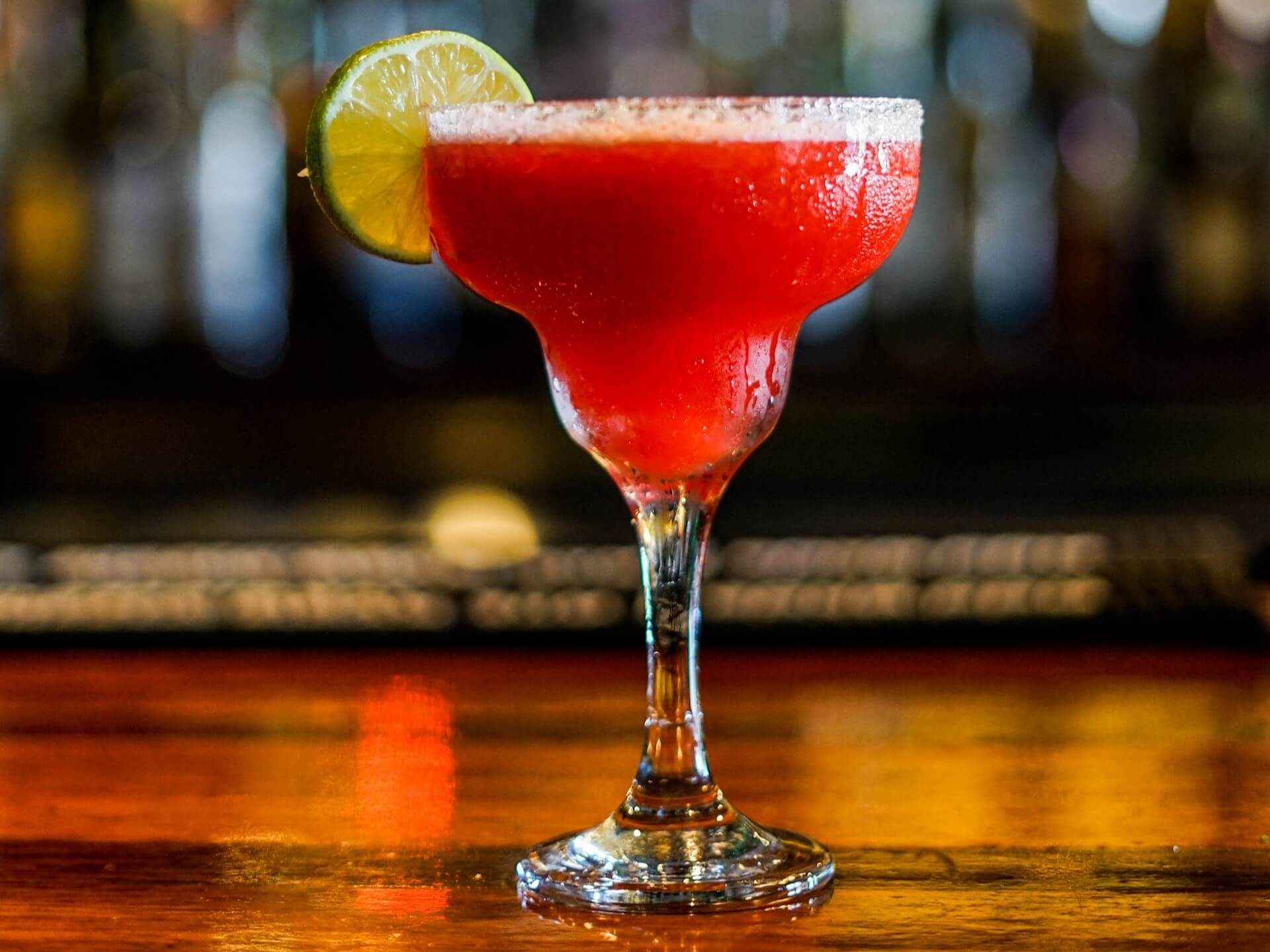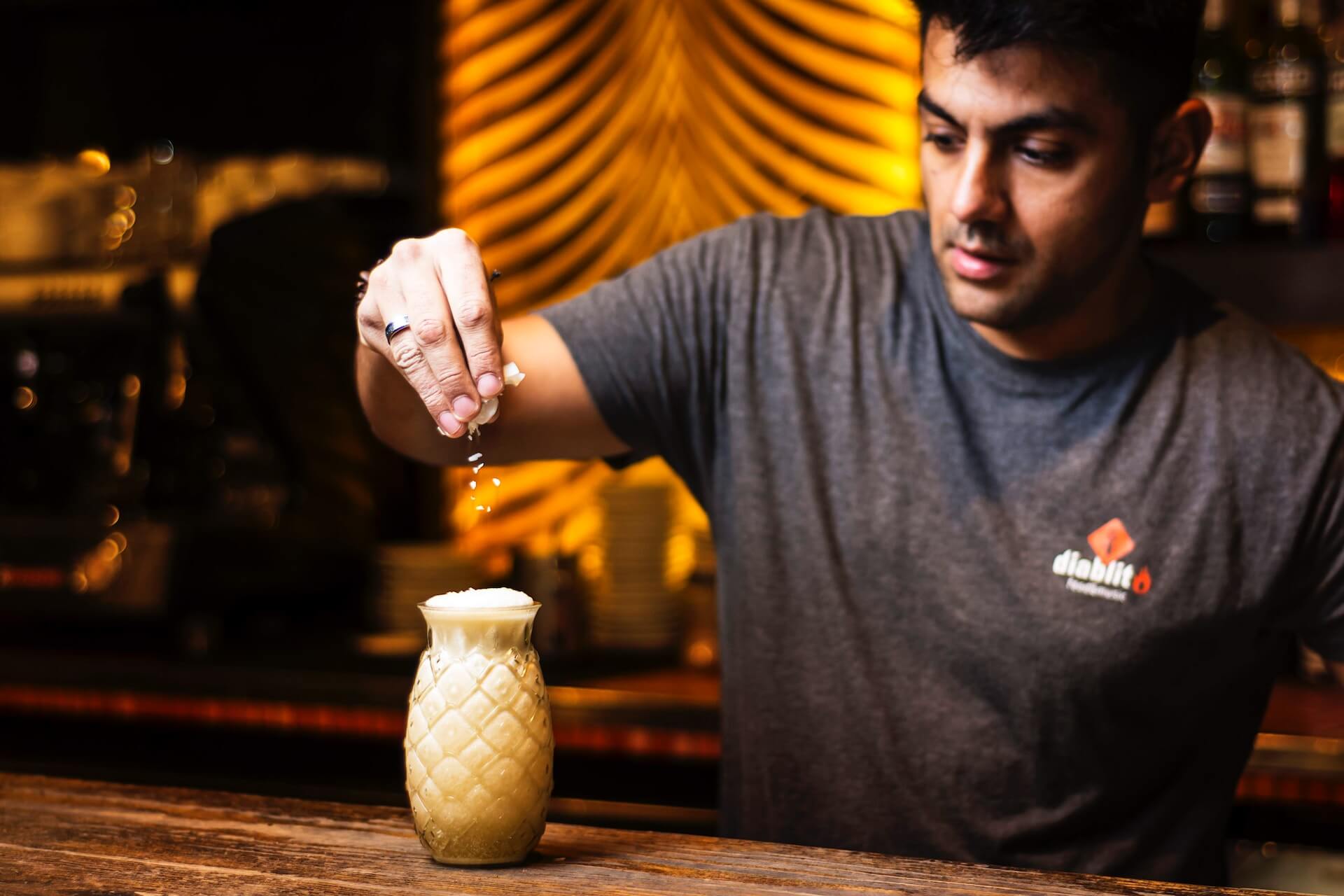Drink Donnybrook: Let’s Talk Daiquiri
by David Klemt

Like some other simple cocktails, the Daiquiri makes the case for building drinks with but a few elements and with the proper technique.
The keys are the quality of the ingredients, technique, and hospitality. Made with just three items—rum, lime juice, and sugar syrup—the Daiquiri has etched itself onto Cocktail Mount Rushmore. That imaginary cocktail landmark also includes the Margarita, of course.
So simple is the Daiquiri that it’s used to gauge bartender proficiency, much like its peer the Margarita.
Many a well-known bartender—revered, infamous or otherwise—will throw down the Daiquiri gauntlet after encountering an upstart boasting about their latest 10-ingredient, split-base cocktail tomfoolery.
Sure, they can make you a drink that takes ten minutes to build, and you’ll likely remember the experience, for better or worse. But can they knock your socks off with a simple Daiquiri?
But where does the Daiquiri come from? Just like I’ve done with the Martini, Piña Colada, and Whiskey Sour, let’s dive into this classic’s history.
History Lesson
I’m sure you’ll be absolutely aghast to learn that the exact origins of the Daiquiri aren’t crystal clear. However, it’s widely accepted that the cocktail was invented in Cuba two years before the Spanish-American War kicked off in 1898.
The creator was Jennings Cox, a claim backed up by the discovery of a recipe card signed by Cox and dated 1896. It’s believed that the drink was named for the port town of Daiquiri.
Just over a decade later, the Daiquiri was introduced to the United States in 1909 by Rear Admiral Lucius W. Johnson. After trying one in Cuba and liking what he tasted, he brought the recipe back to the Army and Navy Club in Washington, DC. Members introduced others to the Daiquiri, and it eventually became one of the most popular cocktails in the world.
That is, unless you choose to believe the rumor that the drink found itself in New York in 1902.
Going down this path of Daiquiri lore, US Congressman William A. Chanler (D-NY) bought iron mines in Cuba. While he was in Cuba he was introduced to the Daiquiri. In turn, Chanler brought the Daiquiri to New York City, sharing it with several clubs of which he was a member, such as the New York Yacht Club and Knickerbocker Club.
Recipe Refinement
The Daiquiri’s story doesn’t end there, however. There are two important bartenders who deserve credit for refining the original recipe.
First up is Emilio “El Maragato” Gonzalez, who tended bar at the Hotel Plaza in Havana, Cuba. Whereas the Cox build was served in a tall glass over cracked ice, El Maragato is credited as the first to shake and strain the Daiquiri, serving it up it in a coupe. And while Cox used brown sugar in the original, Gonzalez used white sugar.
Then, we have Constantino “Constante” Ribalaigua Vert. Constante owned and worked behind the stick at a bar you may have heard of, El Floridita, also in Havana. If you can’t quite put your finger on why you know that bar’s name, it’s because Earnest Hemingway plays a role in its fame.
Ribalaigua invented the frozen Daiquiri, and subsequently the Papa Doble or Hemingway Daiquiri, which was Constante’s original build with less (or zero) sugar and double the rum.
Jeff “Beachbum” Berry says in his book Potions of the Caribbean that Hemingway once put down 15 Papa Dobles. In another book, To Have and Have Another: A Hemingway Cocktail Companion, author Phillip Greene says Hemingway managed seventeen.
Those who have visited Herbs & Rye, one of the best cocktail bars in America, know that the first cocktail under the Prohibition Era section of the menu is a Hemingway Daiquiri.
Below you’ll find a traditional Daiquiri recipe and the Hemingway Daiquiri build. Cheers!
Recipe
- 2 ounces Light rum
- 1 ounce Freshly squeezed lime juice
- ¾ ounce Demerara sugar syrup
- Lime twist to garnish
Either fill a coupe with ice or pull a chilled coupe from your refrigerator. Set aside. Add all ingredients minus the garnish to a cocktail shaker filled with ice. Strain into the prepared coupe, garnish, and serve.
Papa Doble aka Hemingway Daiquiri recipe
- 2 ounces White rum
- ¾ ounce Freshly squeezed lime juice
- ½ ounce Freshly squeezed grapefruit juice
- ½ ounce Maraschino liqueur
- Lime wheel to garnish
Follow the build instructions above; it’s that simple!
Image: Tai’s Captures on Unsplash



